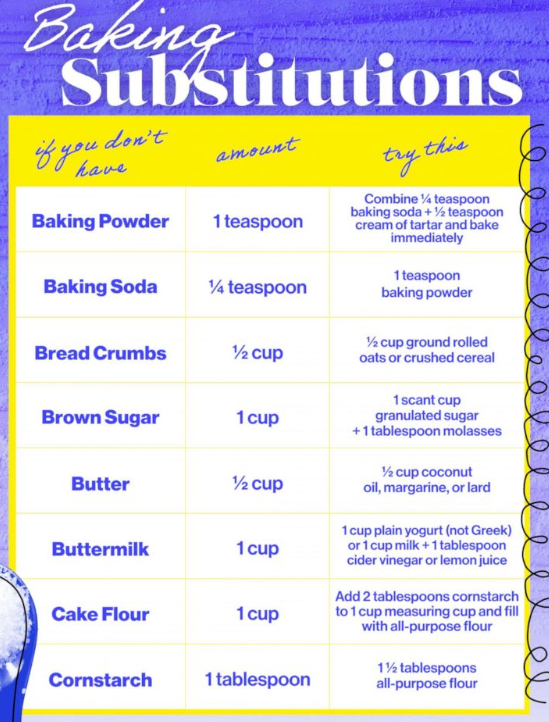BOURSESSENEGAL – Are you in the middle of a baking project and just realized you’re out of baking powder substitute? Don’t worry; you have options! Baking powder plays a crucial role in making your baked goods rise and become light and fluffy. Understanding how to replace it can save your recipe and keep your baking on track. In this guide, we’ll explore effective substitutes for baking powder, how they work, and tips for successful baking.
What is Baking Powder?
Before we dive into substitutes, let’s briefly discuss what baking powder is and why it’s essential. Baking powder is a leavening agent that combines an acid and a base, usually cream of tartar and baking soda. When it comes into contact with moisture and heat, it produces carbon dioxide gas. This gas creates bubbles in the batter, causing your cakes and cookies to rise.
Why Might You Need a Substitute?
Sometimes, you might find yourself without baking powder due to various reasons:
- You ran out unexpectedly.
- You’re looking for a healthier alternative.
- You have specific dietary restrictions.
Regardless of the reason, knowing a few effective substitutes can save the day.
Common Baking Powder Substitutes
Here are some reliable substitutes for baking powder, including how to use them in your recipes.
1. Baking Soda and Vinegar
One of the easiest substitutes is a combination of baking soda and vinegar. This combination provides the same leavening effect as baking powder.
How to Use It
- Ratio: Use 1 teaspoon of baking soda plus 2 teaspoons of vinegar for every teaspoon of baking powder needed.
- Note: Mix the baking soda with the dry ingredients and the vinegar with the wet ingredients, then combine them just before baking.
2. Baking Soda and Lemon Juice
Similar to vinegar, lemon juice can react with baking soda to create carbon dioxide gas.
How to Use It
- Ratio: Use 1 teaspoon of baking soda and 1 tablespoon of lemon juice for each teaspoon of baking powder.
- Tip: Ensure you mix them quickly to activate the reaction.
3. Yogurt
Yogurt is a fantastic substitute because it adds moisture and acidity, which helps baked goods rise.
How to Use It
- Ratio: Replace 1 teaspoon of baking powder with 1/4 cup of yogurt and reduce the liquid in your recipe by 1/4 cup.
- Best For: Cakes, muffins, and pancakes.
4. Buttermilk
Buttermilk is another great alternative. Its acidity reacts with baking soda, producing a similar leavening effect.
How to Use It
- Ratio: Use 1/4 cup of buttermilk in place of 1 teaspoon of baking powder. Reduce the liquid in the recipe accordingly.
- Perfect For: Pancakes, waffles, and quick breads.
5. Self-Rising Flour
If you have self-rising flour, you can use it as a substitute for both flour and baking powder in your recipe.
How to Use It
- Ratio: For every cup of all-purpose flour, substitute with 1 cup of self-rising flour, which already contains baking powder and salt.
- Usage Tip: Adjust the amount of salt in your recipe since self-rising flour contains salt.
Unique Substitutes for Specific Recipes
In addition to the common substitutes mentioned above, here are some unique options based on specific baking needs.
1. Cream of Tartar and Baking Soda
If you have cream of tartar at home, you can use it with baking soda as an effective substitute.
How to Use It
- Ratio: Mix 1/2 teaspoon of cream of tartar with 1/4 teaspoon of baking soda for every teaspoon of baking powder.
- Ideal For: Any recipe requiring baking powder.
2. Molasses
Molasses is not just a sweetener; its acidity makes it a good leavening agent when combined with baking soda.
How to Use It
- Ratio: Use 1/4 cup of molasses with 1/2 teaspoon of baking soda to replace 1 teaspoon of baking powder.
- Best In: Cookies and gingerbread.
3. Club Soda
For recipes that can tolerate extra liquid, club soda can work as a leavening agent due to its carbonation.
How to Use It
- Ratio: Replace the liquid in your recipe with an equal amount of club soda.
- Recommended For: Muffins and quick breads.
Tips for Successful Baking Without Baking Powder
When you substitute baking powder, keep these tips in mind to ensure successful baking:
1. Measure Accurately
Accurate measurement is crucial. Using too much or too little of a substitute can affect the final texture and taste of your baked goods.
2. Act Quickly
Leavening agents like baking soda and vinegar react quickly. Once mixed, get your batter into the oven as soon as possible to maximize the leavening effect.
3. Adjust Cooking Time
Keep an eye on your baked goods. Some substitutes might affect cooking times, so check for doneness a few minutes earlier than the recipe states.
4. Experiment
Baking is as much an art as it is a science. Feel free to experiment with different substitutes to find what works best for your taste and texture preferences.
Conclusion: Baking Made Easy
In summary, having a baking powder substitute on hand can keep your baking projects running smoothly. Whether you use baking soda with vinegar, yogurt, or even self-rising flour, you can still create delicious treats without missing a beat. Remember to measure accurately, act quickly, and adjust cooking times as necessary.
With these tips and substitutes, you’re well-equipped to tackle any baking challenge that comes your way. So next time you find yourself without baking powder, don’t panic—embrace the creativity of baking and enjoy the process! Happy baking
REFERENCE : https://www.health.com/



